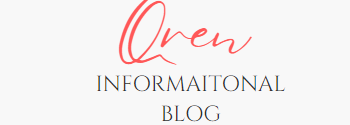How to Do Affiliate Marketing on Pinterest Without a Website. Did you know that Pinterest has over 460 million active users every month? That’s a massive audience just waiting to discover new ideas and products! While many people think that starting affiliate marketing requires a personal website, I’m here to tell you that it’s entirely possible to dive into this rewarding venture using just Pinterest. In this article, I’ll walk you through the steps of affiliate marketing on Pinterest without needing a website. Along the way, I’ll share tips, personal experiences, and insights to help you succeed.
Understanding Affiliate Marketing
How to Do Affiliate Marketing on Pinterest Without a Website. Affiliate marketing is a performance-based way to earn money by promoting other people’s products. You can earn a commission every time someone makes a purchase through your unique affiliate link. This makes it a great option for anyone looking to monetize their online presence.
Why Choose Pinterest for Affiliate Marketing?
Pinterest is a visual discovery platform, making it an ideal space for sharing product ideas. Users come to Pinterest with the intention of finding inspiration and planning their future purchases. With its visually appealing format, you can easily showcase products and drive traffic to your affiliate links.
Getting Started with Pinterest Affiliate Marketing
Before you start pinning, it’s important to set up your Pinterest account correctly.
- Create a Pinterest Business Account:
- Sign up for a business account to access analytics, ad tools, and other features beneficial for marketers.
- Switching to a Business Account: If you already have a personal account, you can easily switch it to a business account through the settings.
- Optimize Your Profile:
- Profile Picture: Use a clear image of yourself or your brand logo.
- Bio: Write a short, friendly bio that reflects your interests and includes keywords related to your niche.
- Claim Your Website:
- While you may not have a website, you can still claim your Instagram or YouTube account if you have them. This helps link your content to your profile.
Creating Eye-Catching Pins
Creating beautiful and engaging pins is crucial for attracting users’ attention. Here are some tips to create pins that stand out:
- Use High-Quality Images: Clear and bright images will catch the eye of users scrolling through their feeds.
- Incorporate Text Overlays: Adding short, compelling text can help convey what your pin is about and why it’s worth clicking.
- Maintain a Consistent Style: Establish a cohesive aesthetic for your pins to build brand recognition.
Joining Affiliate Programs
To earn money through affiliate marketing, you need to join affiliate programs that match your interests. Here are a few popular affiliate programs to consider:
| Affiliate Program | Commission Rate | Best For |
|---|---|---|
| Amazon Associates | Up to 10% | A wide range of products |
| ShareASale | Varies | Various niches available |
| Rakuten Marketing | Varies | Brand-specific products |
| Click Bank | Up to 75% | Digital products |
Creating a Pinterest Strategy
Having a strategy will help you stay organized and focused. Here are some steps to consider:
- Choose Your Niche: Focus on a specific area that interests you, like fashion, home decor, or beauty products. This will help you build a dedicated following.
- Research Keywords: Use Pinterest’s search feature to identify popular keywords and phrases related to your niche. Incorporate these keywords into your pin descriptions for better visibility.
- Pin Consistently: Aim to pin regularly, at least a few times a day, to keep your content fresh and engage your audience.
Promoting Your Pins
Simply creating pins isn’t enough; you must also promote them effectively. Here’s how:
- Join Group Boards:
- Collaborate with other Pinterest users in your niche by joining group boards. This allows you to reach a broader audience.
- Use Tailwind:
- Consider using scheduling tools like Tailwind to plan your pins in advance. This can save you time and help you maintain consistency.
- Engage with Your Audience:
- Respond to comments and engage with users who interact with your pins. Building a relationship with your audience can increase your credibility.
Tracking Your Success
To measure your success, regularly review your Pinterest analytics. Look at metrics such as:
- Engagement Rate: How many people are engaging with your pins.
- Click-Through Rate: The percentage of people who click on your pins to visit your affiliate links.
- Conversions: Track how many users make purchases through your links.
Personal Tips and Insights
In my experience, the key to success in affiliate marketing on Pinterest lies in authenticity. Here are some recommendations based on what I’ve learned:
- Share Personal Experiences: When promoting products, share your personal experiences. Authenticity builds trust with your audience.
- Experiment with Different Pin Styles: Don’t hesitate to try out different types of pins to see what resonates with your audience.
- Stay Updated: Pinterest is constantly evolving, so stay updated on new features and trends to stay ahead.
Common Mistakes to Avoid
Here are a few mistakes to steer clear of while starting your affiliate marketing journey on Pinterest:
| Mistake | Description |
|---|---|
| Not Optimizing Pins | Ignoring keywords and descriptions can hurt visibility. |
| Over-Promoting Products | Spamming users with affiliate links can turn them off. |
| Ignoring Analytics | Failing to track performance means missing opportunities for improvement. |
Here are 10 frequently asked questions (FAQs) related to affiliate marketing on Pinterest without a website:
FAQs on Affiliate Marketing on Pinterest Without a Website
-
What is affiliate marketing?
- Affiliate marketing is a way to earn a commission by promoting other people’s products or services. You receive a unique affiliate link, and when someone makes a purchase through that link, you earn a percentage of the sale.
-
Can I do affiliate marketing on Pinterest without a website?
- Yes, you can promote affiliate products directly on Pinterest without having a personal website. You can use your Pinterest profile to share pins with your affiliate links.
-
How do I set up a Pinterest business account?
- To set up a Pinterest business account, go to the Pinterest for Business page and click on “Join as a Business.” Follow the prompts to create your account, or convert your personal account to a business account through the settings.
-
What type of content should I pin?
- You should create visually appealing pins that showcase products or ideas related to your niche. High-quality images, engaging text overlays, and clear descriptions are key to attracting users.
-
How do I find affiliate programs to join?
- You can find affiliate programs by searching for brands in your niche that offer affiliate partnerships. Popular platforms like Amazon Associates, ShareASale, and Click Bank also provide access to various affiliate programs.
-
What are some tips for creating effective pins?
- Use high-quality images, incorporate text overlays, maintain a consistent style, and ensure your pins are vertically oriented. Adding a clear call to action in the pin description can also help drive clicks.
-
How often should I pin on Pinterest?
- Aim to pin regularly, ideally several times a day. Consistency helps keep your content visible and engages your audience effectively.
-
Can I use affiliate links directly in my pins?
- Yes, you can use affiliate links in your pin descriptions. However, it’s essential to disclose that the link is an affiliate link to maintain transparency with your audience.
-
How do I track the success of my affiliate marketing efforts on Pinterest?
- Use Pinterest Analytics to track metrics such as engagement rate, click-through rate, and conversions. This data will help you understand what’s working and what needs improvement.
-
What mistakes should I avoid when starting affiliate marketing on Pinterest?
- Common mistakes include not optimizing your pins with keywords, over-promoting products without providing valuable content, and failing to track your analytics. Staying authentic and engaging with your audience is crucial for long-term success.
Conclusion: How to Do Affiliate Marketing on Pinterest Without a Website
Embarking on an affiliate marketing journey on Pinterest without a website can be a rewarding venture. By leveraging Pinterest’s visual platform, optimizing your profile, creating eye-catching pins, and engaging with your audience, you can successfully promote products and earn commissions.
Remember, the key is consistency and authenticity. As you navigate this exciting path, keep experimenting, learning, and adjusting your strategies. I encourage you to start today—dive into the world of affiliate marketing on Pinterest, and you might be surprised by the results! Now that you have the tools and insights to get started, why not take the first step? Create a Pinterest business account and begin crafting those beautiful pins today. Happy pinning!


1 thought on “How to Do Affiliate Marketing on Pinterest Without a Website”